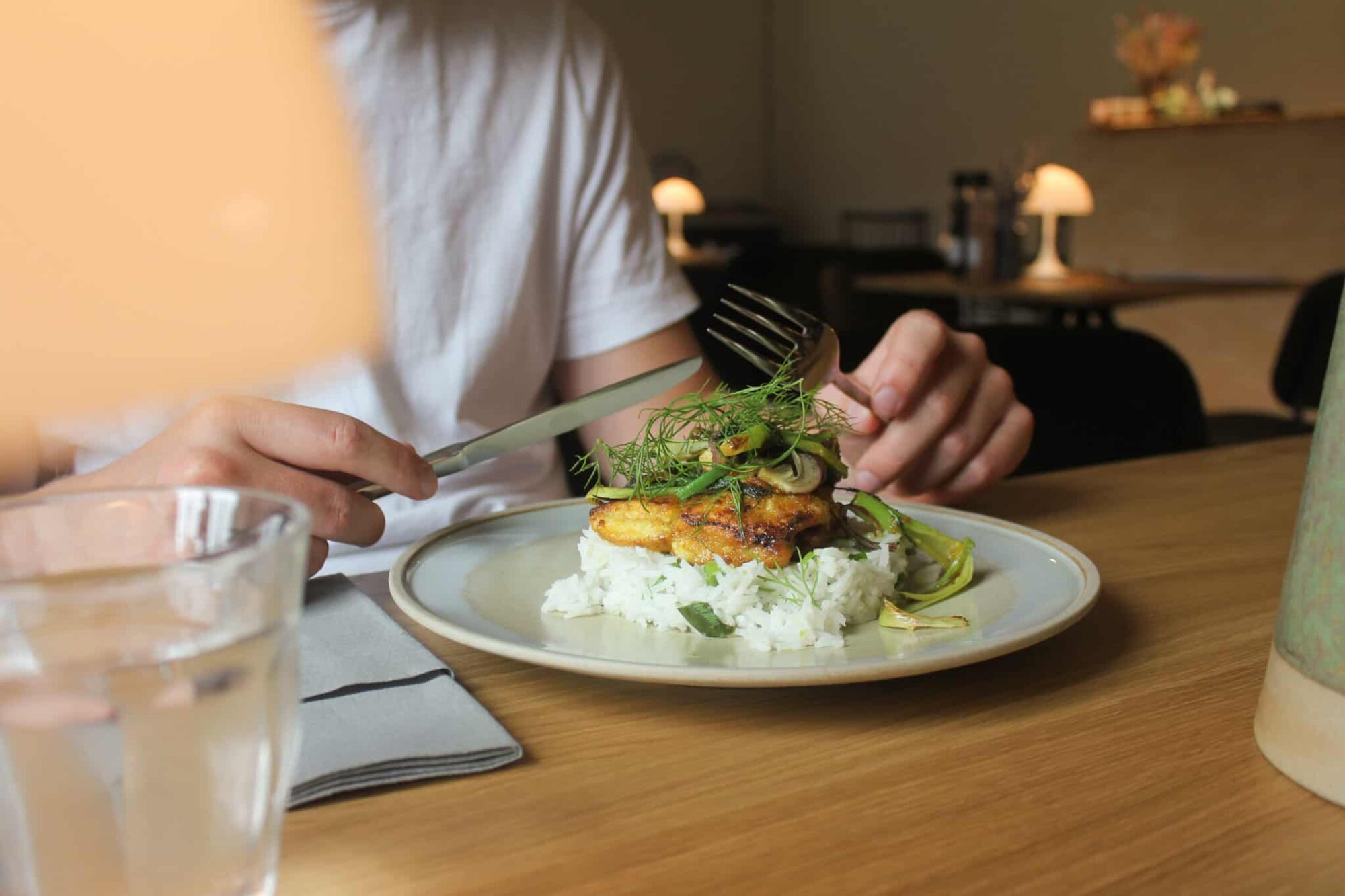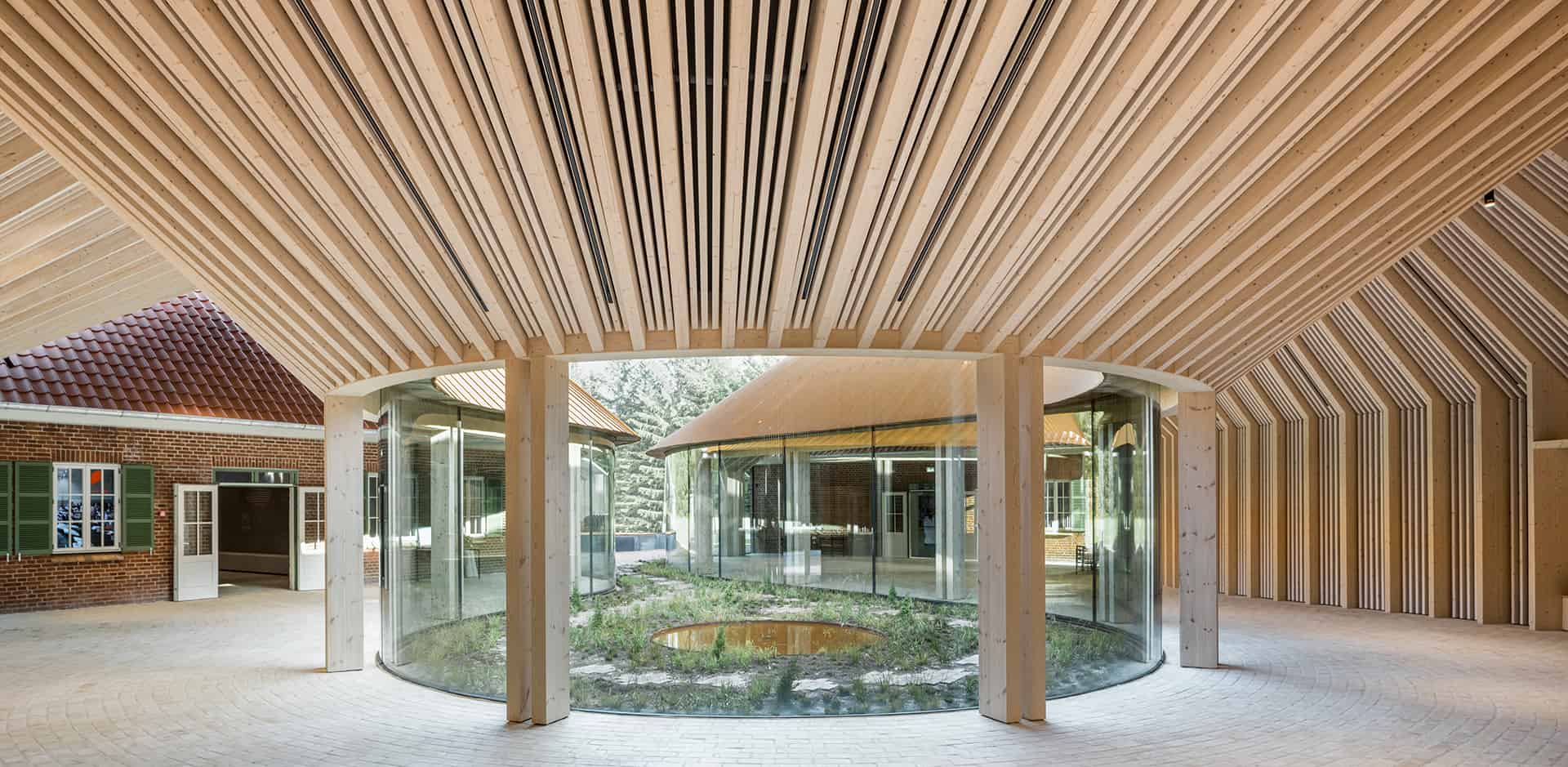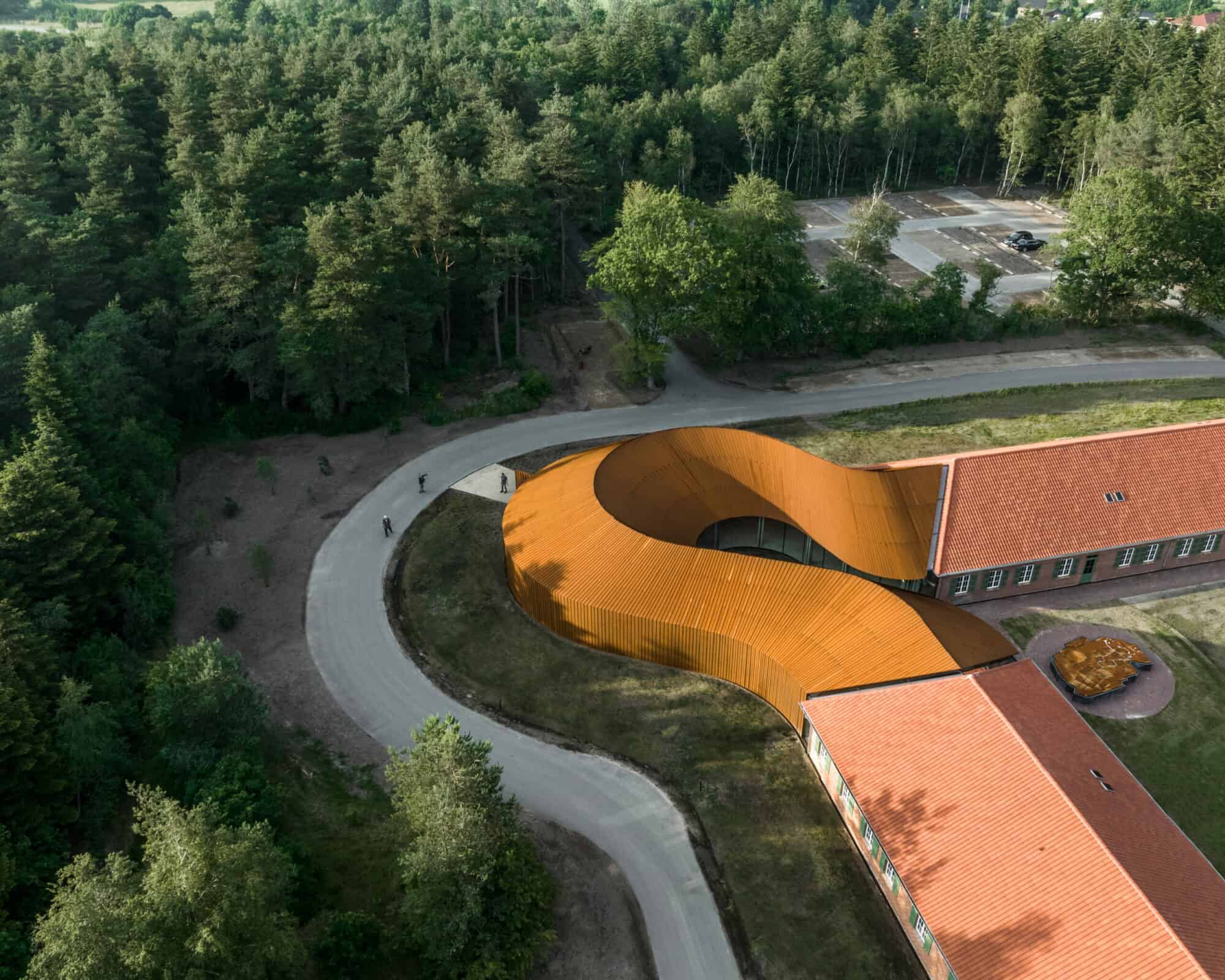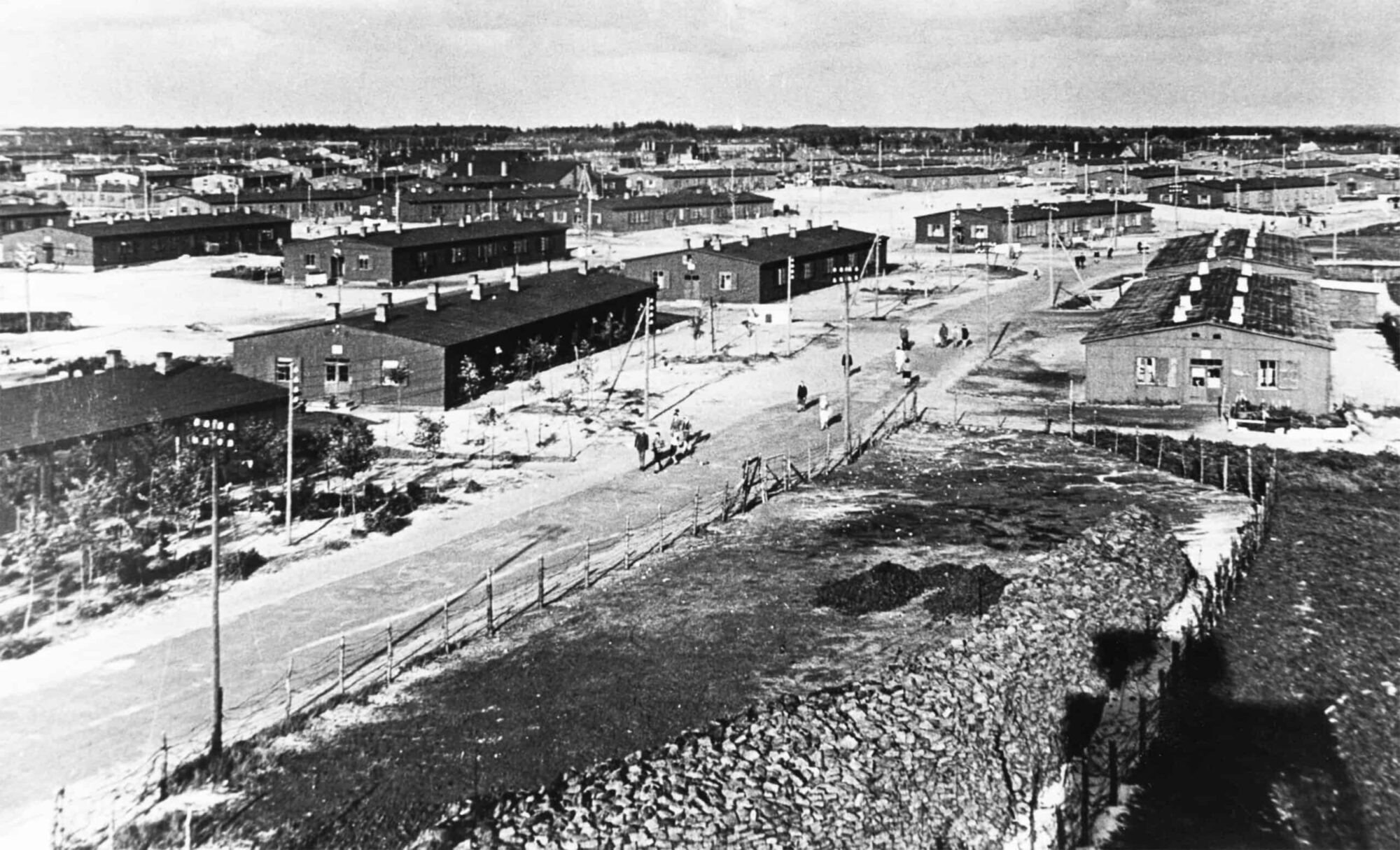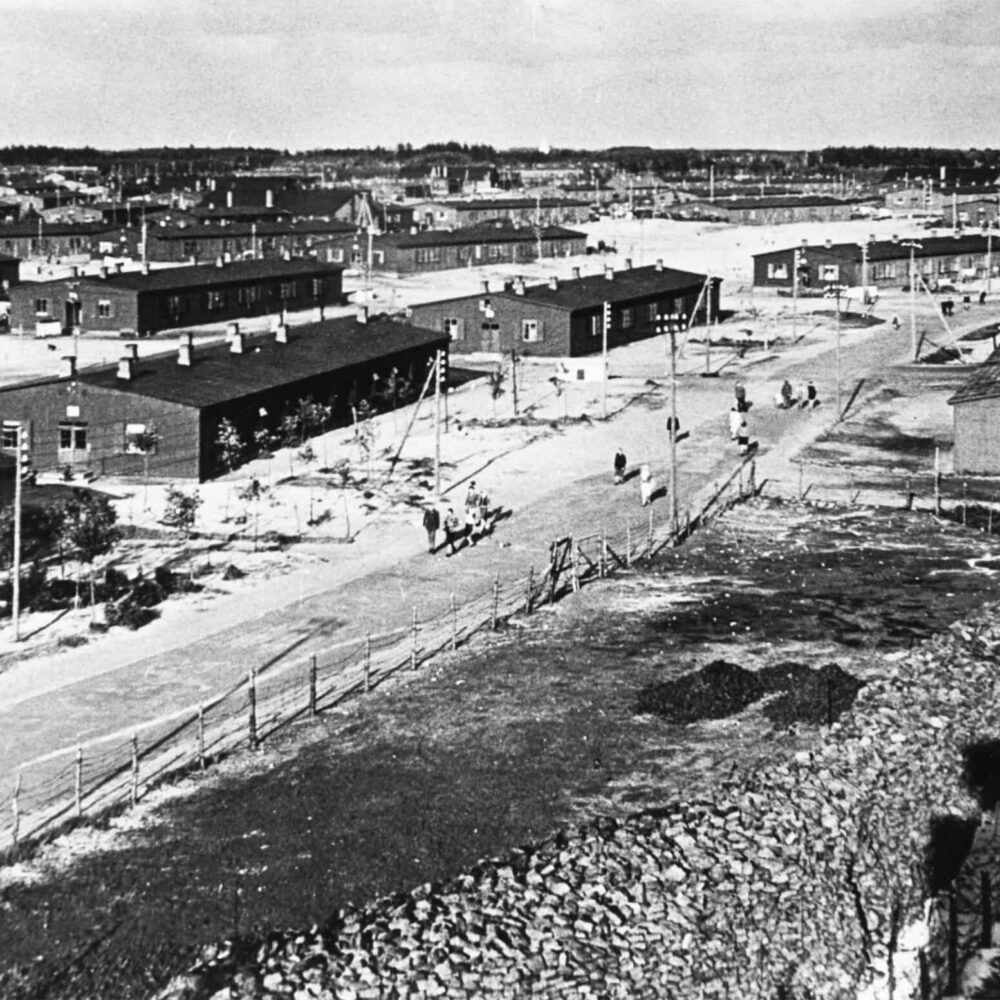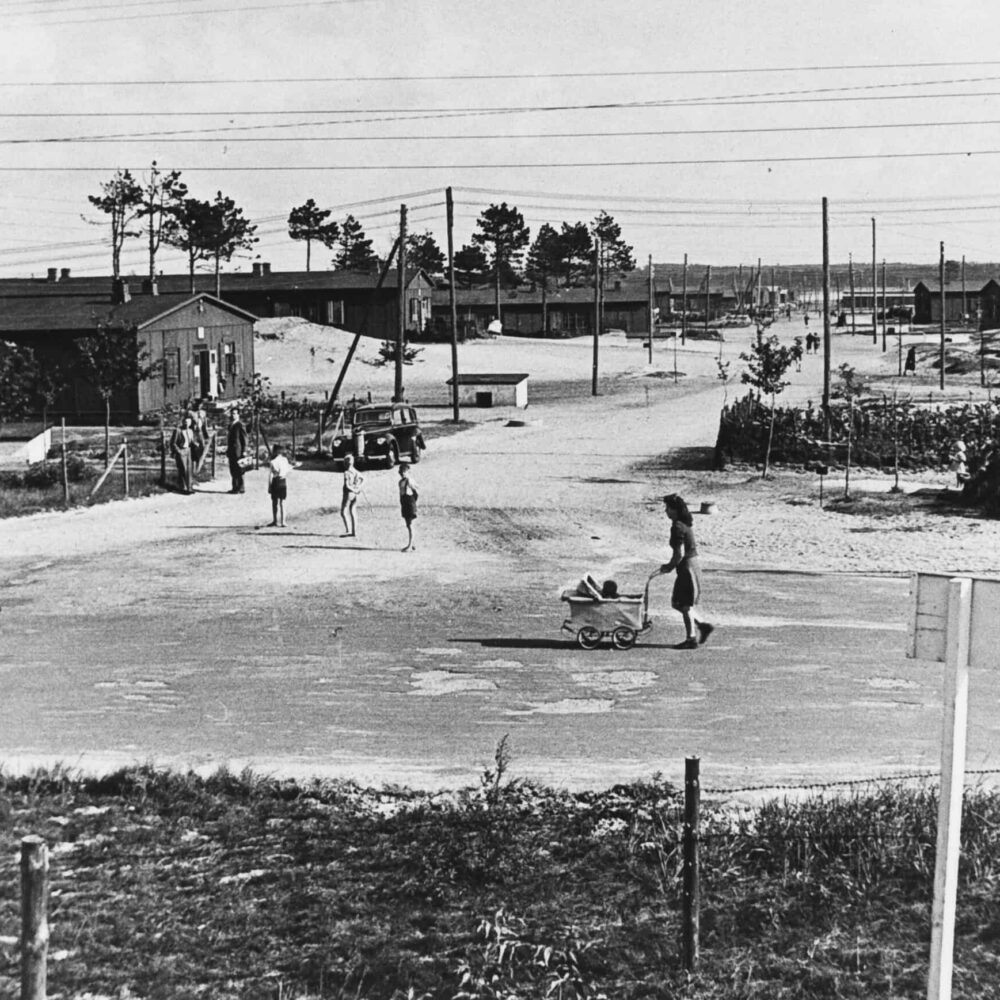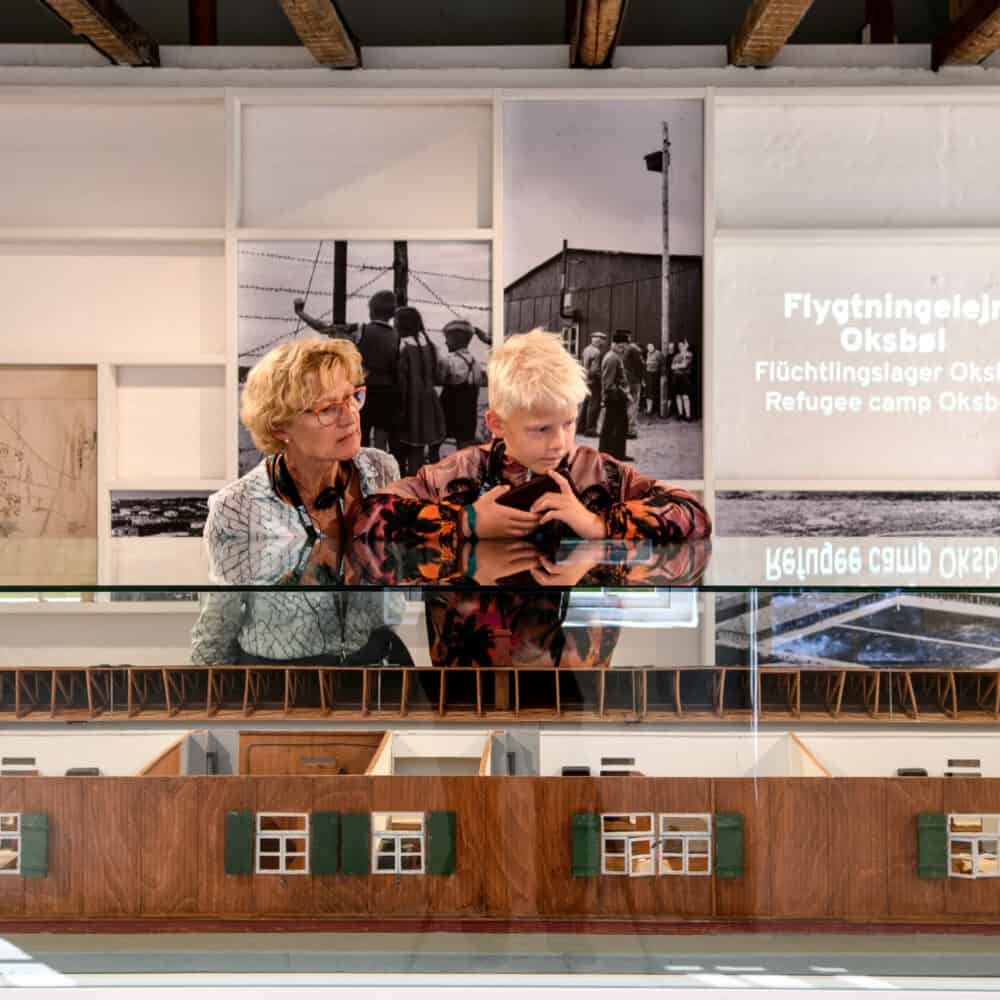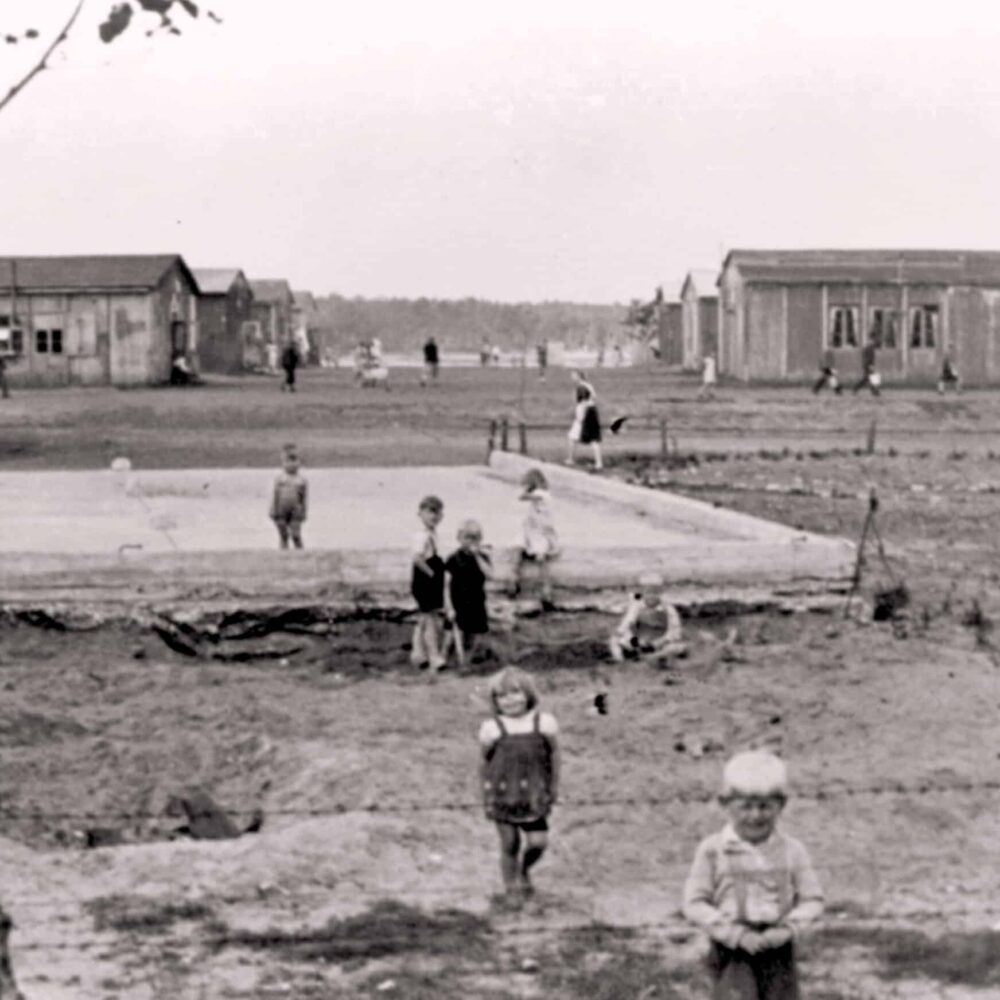Refugee Camp Oksbøl
Immerse yourself in the history of the refugee camp, which was Denmark’s fifth largest city. Through powerful tales and objects, you hear about life in the camp.
At the end of World War II, after a dramatic and terrifying escape, more than 250,000 German civilians arrived in occupied Denmark. The Red Army’s attacks on Nazi Germany during the final months of the war made a huge impact on the civilian population, forcing millions of Germans to flee from their homes. In 1945, Denmark’s largest refugee camp was created in Aal Plantation in Oksbøl. It housed 35,000 refugees at the time of its largest capacity.
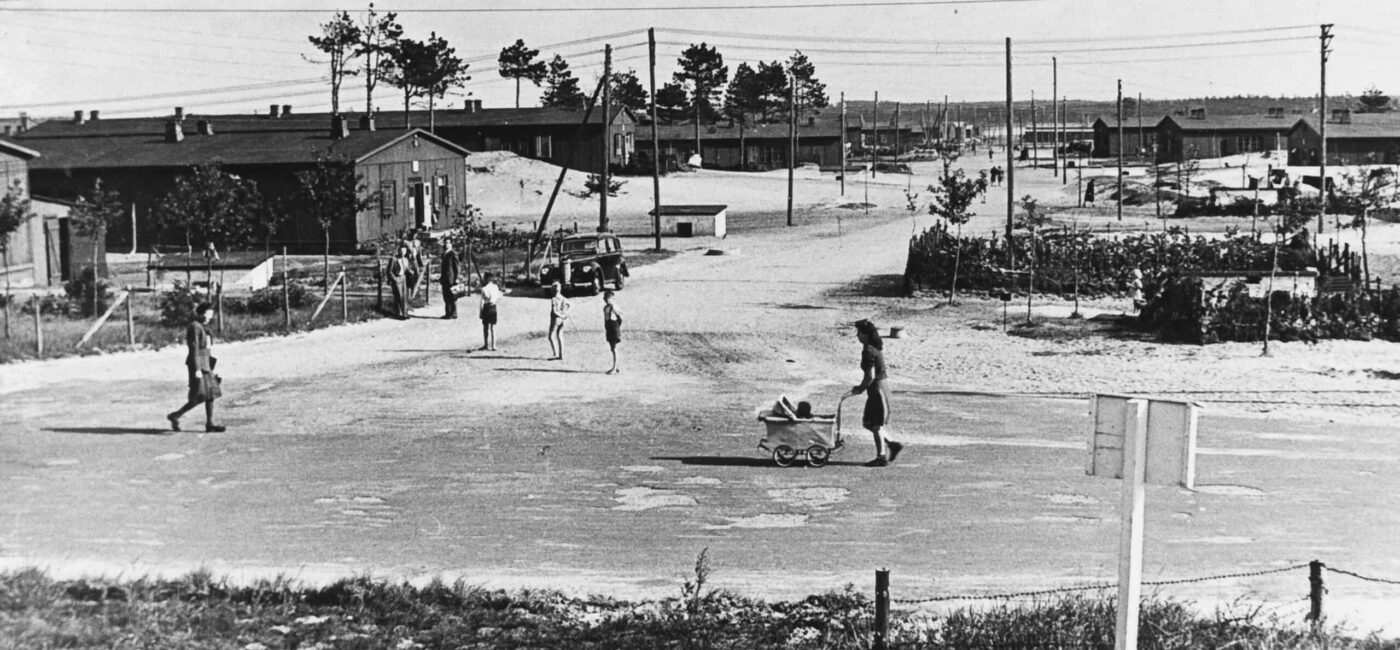
Young woman with pram in Refugee Camp Oksbøl
Life in the camp was marked by the experience of fleeing and uncertainty for the future. It became a life in a city behind barbed wire. with city council, theater, cinema and school.
“Theater-Oxbøl” functioned as both a cinema and a theater. There was room for 800 spectators and 3-4 daily performances were played. Sit back in the theatre’s chairs, where you will see authentic film clips from life in the camp in the years after World War II.
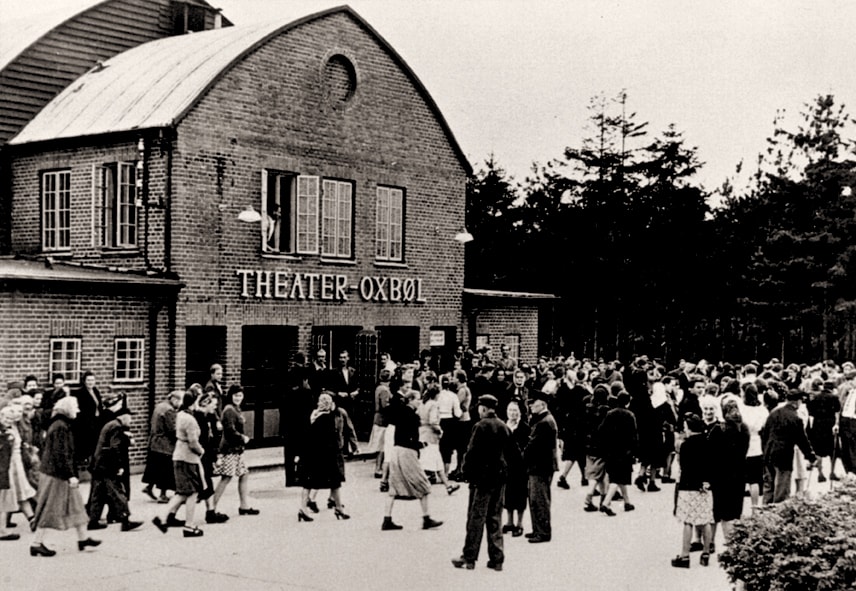
Theater-Oxbøl


